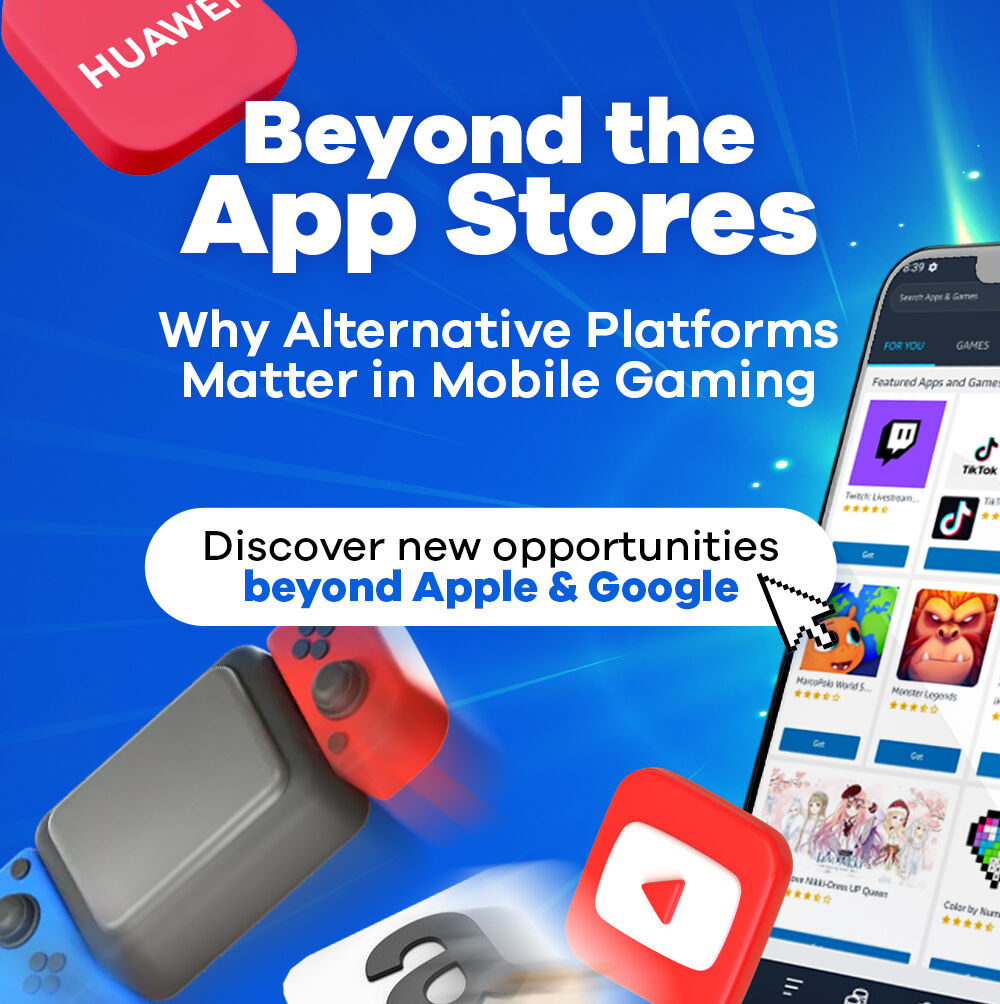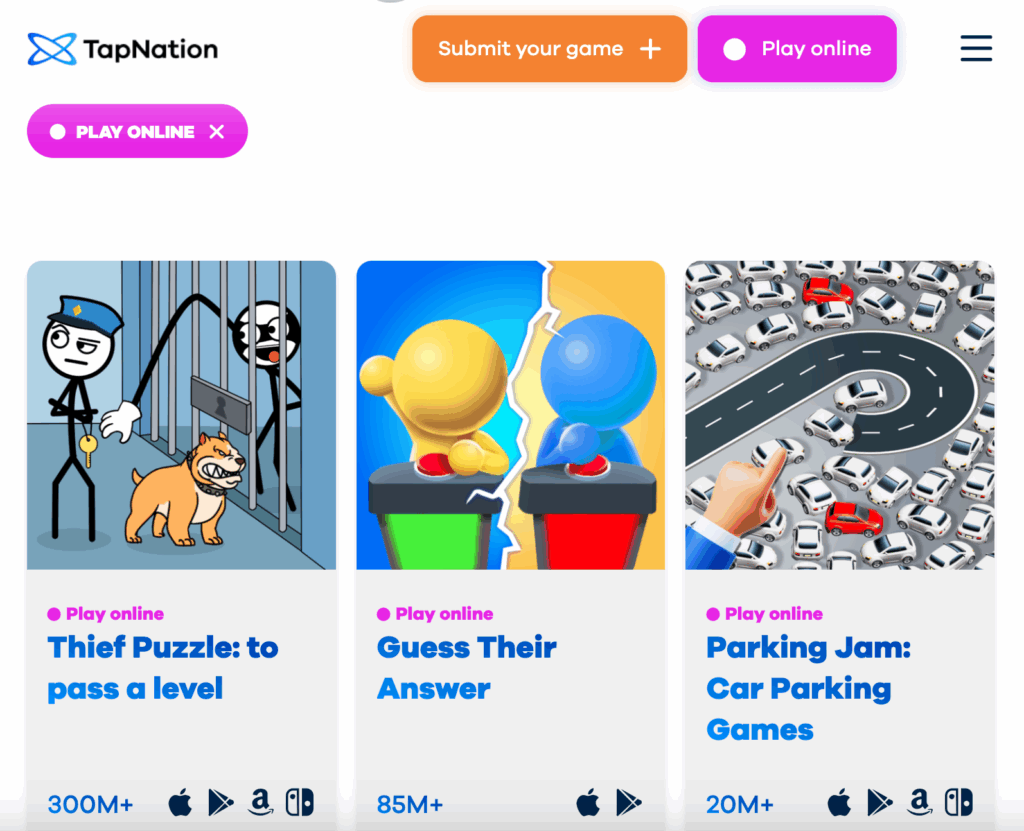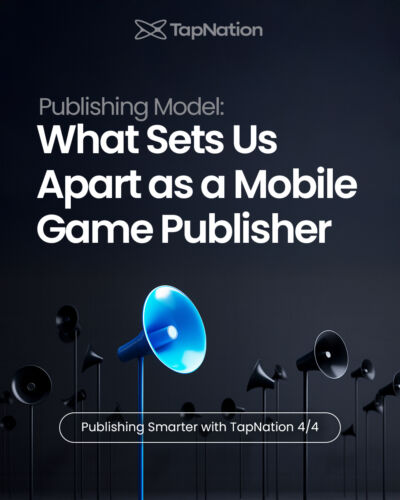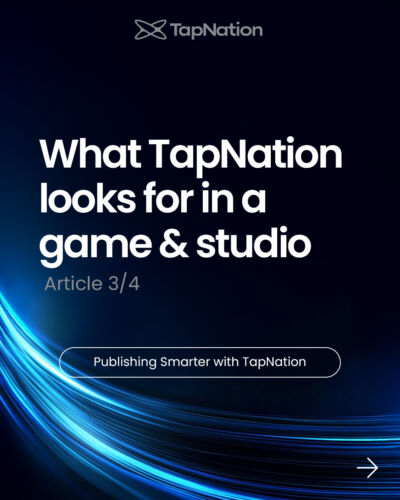Deniz Can Köse – June 19, 2025
Introduction
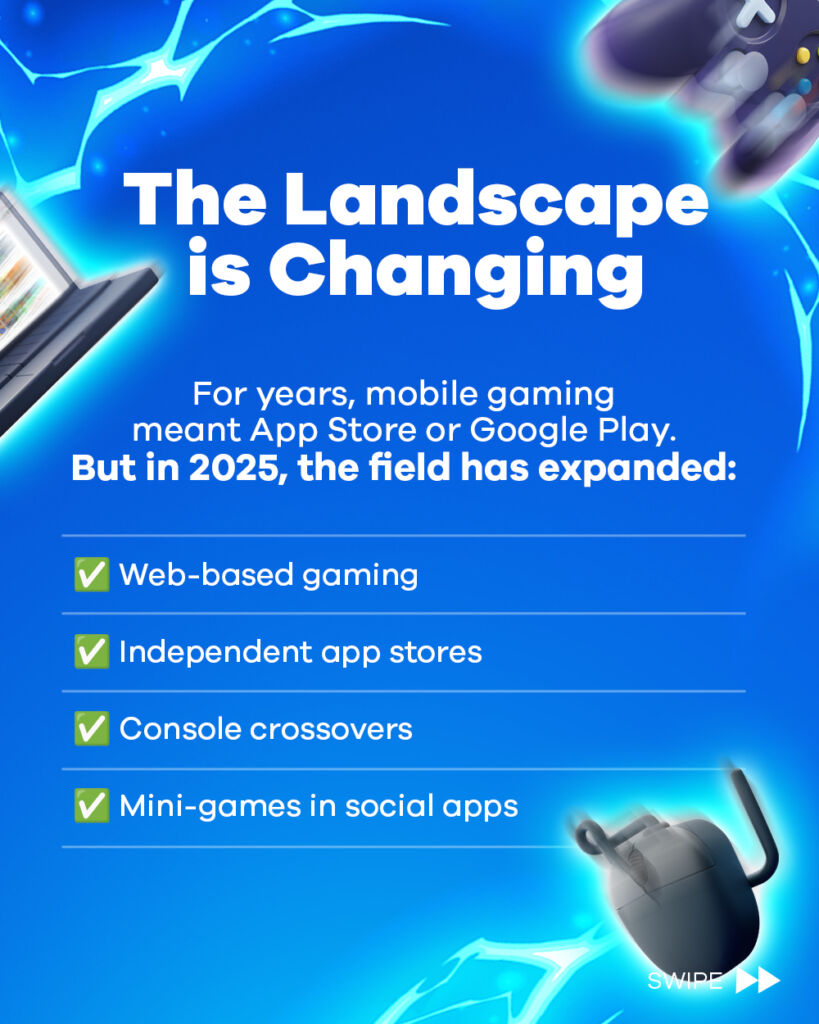
For years, the App Store and Google Play were the only real spots for mobile gaming success. That’s where everyone launched — and where everyone competed. But the landscape is evolving fast.
In 2025, mobile gaming is no longer tied to just two storefronts. Alternative platforms are gaining ground — and smart studios are taking notes. From web-based portals to console crossovers, there are now more ways to reach players, test ideas, and grow sustainably.
So let’s take a step back and ask: why should studios start thinking beyond the big two? What are these alternative platforms? And how can publishers make the most of these new opportunities? Let’s dive in.
What Are Alternative Platforms?
In mobile gaming, “alternative platforms” are any distribution channels outside Apple’s App Store and Google Play. This can include:
- Independent app stores (like Huawei AppGallery, Amazon Appstore)
- Web gaming platforms and browser-to-mobile cross-play setups (like CrazyGames)
- Console storefronts (like Nintendo Switch)
They’re not replacements — they’re additions. And for many hybrid casual titles, they offer new ways to reach untapped players, test features faster, and build lasting visibility.
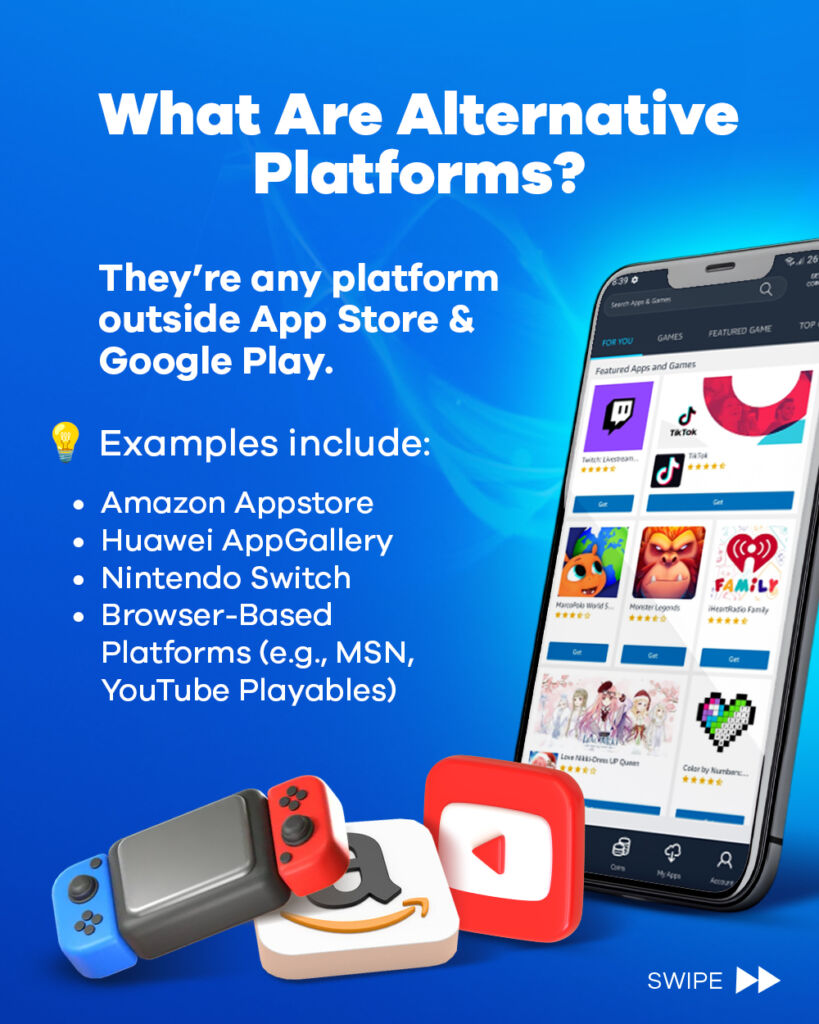
Why Diversify Mobile Game Publishing Platforms?
The Benefits and Drawbacks of Alternative App Stores for Developers and Publishers.
With more players gaming across devices and ecosystems, having your title in just one place might not cut it. Here’s why studios are spreading out:
Benefits
- Less Competition: Fewer games means higher visibility.
- New Markets: Reach users who may not use traditional app stores.
- Better Terms: Some stores offer better revenue shares or fewer restrictions.
- Creative Flexibility: Lighter policy enforcement gives room to try new things.
- Web Gaming Growth: Browser-based platforms offer instant play, no installs.
- Revenue Diversification: Reduce dependency on Apple/Google ecosystems.
Drawbacks
- Technical Tweaks: Builds may require customizations for each platform.
- Limited Analytics or UA Tools: Not all platforms support deep tracking.
- Smaller Reach: Some audiences are still niche — but they’re growing.
Still, for many studios — especially in hybrid casual — the upside is worth it.
In addition to alternative platforms, there’s a trend in cross-platform games, which suits more collective and social gameplay. If you want to know more on this topic, check out our latest coverage .
Major Players in the Alternative App Store Marketplace
Here’s a quick list of today’s most active alternative platforms:
- The Epic Games Mobile Store
- Huawei AppGallery ✅
- The Amazon Appstore ✅
- AltStore
- Aptoide
- Nintendo Switch ✅
- Browser-Based and HTML5 (MSN Play, YouTube Playables, CrazyGames, Discord, Facebook Instant Games…) ✅
While TapNation doesn’t publish on every one, we’re active on several that fit our mobile-first, scale-fast approach:
- Amazon Appstore: Expands mobile reach, especially outside the Google ecosystem.
- Browser-Based Play : We partner with studios building browser-to-mobile cross-play to test early builds and reach new communities.
- Nintendo Switch: We’ve brought selected titles to console to reach broader audiences.
These platforms aren’t here to replace the big stores — but they are powerful complements.
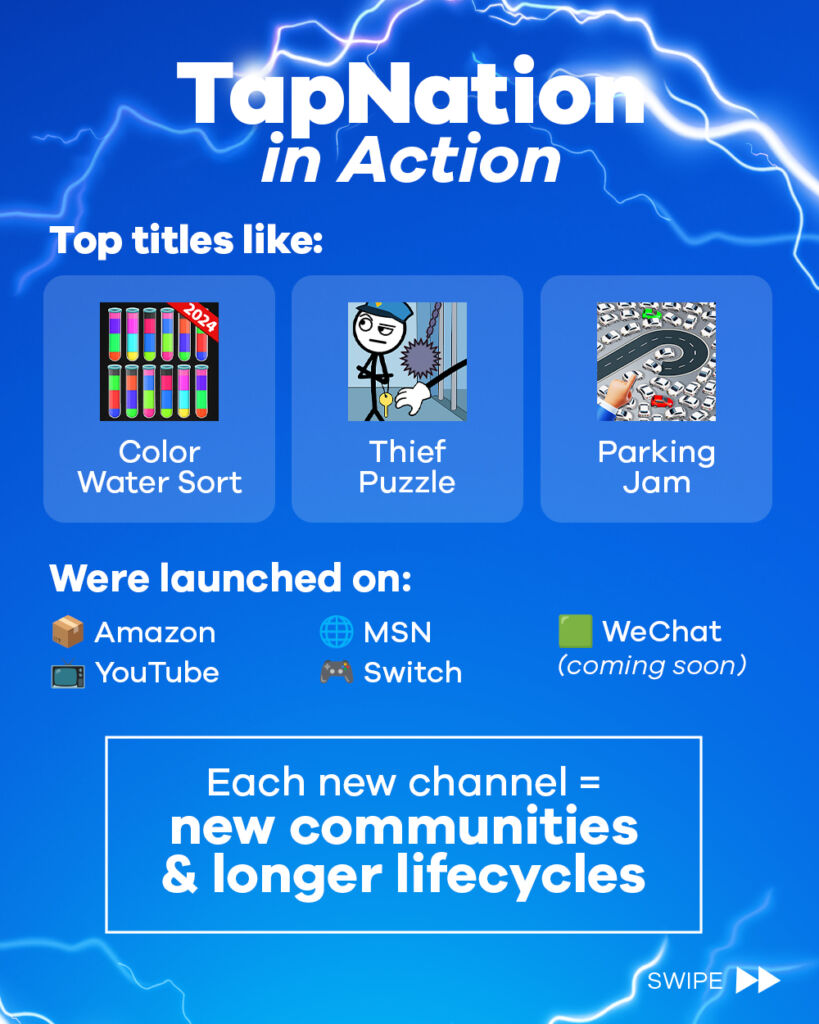
Real Examples from the Industry
- Voodoo, Nitro, and other developers launched HTML5 mini games within the TikTok app .
- TapNation: Top titles like Color Water Sort, Thief Puzzle, and Parking Jam and many more were launched on Amazon, YouTube Playables, MSN Play, CrazyGames, and Nintendo Switch, helping us explore niche segments and extend a game’s lifecycle.
- A special mention goes to WeChat — one of China’s largest digital ecosystems. Earlier this year, we kicked off the process of bringing some of our top titles to the platform. This marks a serious step up. With WeChat’s massive audience, we’re curious to see how our games connect and grow in this space, aiming to go far beyond our previous presence in the Chinese market.
What Kind of Audiences Use Alternative Platforms?
Different platforms attract different players — and understanding who’s where helps you publish smarter and choose the best games for each platform to capture higher player numbers.
Amazon Appstore
The Amazon Appstore often reaches a slightly older, utility-focused crowd — especially users outside the Google Play ecosystem. Think Kindle Fire users, parents setting up kids’ devices, or Android users in regions where Google services are less dominant. These players lean toward casual and evergreen titles that feel familiar and polished.
Browser-Based Play
Browser-to-mobile setups (or browser-native games) are ideal for reaching early testers, virality-driven traffic, and players who skip app stores altogether. These users want to try a game fast — no sign-up, no install. These web platforms pull in a younger, fast-scrolling audience — Gen Z, casual PC users, or gamers looking for a quick break between tasks. Games that are simple to pick up and don’t require downloads thrive here. This crowd loves instant access and visual clarity.
Nintendo Switch
This audience blends nostalgia with a taste for creativity. Many are core gamers who appreciate indie gems and light, satisfying mechanics. Bringing a mobile title to Switch can attract a totally different crowd — players who value tactile gameplay and the premium “console feel,” even for simpler formats.
Mini-Games
Mini games inside apps like WeChat or TikTok attract a broad, casual-first audience looking for quick, social gameplay. These players value instant access, no downloads, and light mechanics that deliver fun in short bursts. Their in-app virality and repeat usage make them perfect for organic growth and concept testing. For mobile publishers, they offer a fast, low-barrier way to reach new players and validate game ideas.
Final Thought
Alternative Platforms as the Way to Reach More and More Segmented Audiences.
The future of mobile gaming isn’t tied to one or two stores. Instead, it’s fragmented, flexible, and focused on player choice. Alternative platforms will play a bigger role in helping studios:
- Connect with niche, regional, and emerging audiences
- Explore cross-platform and browser-first gaming designs
- Innovate with new monetization and engagement models
- Build resilience against market shifts by diversifying presence
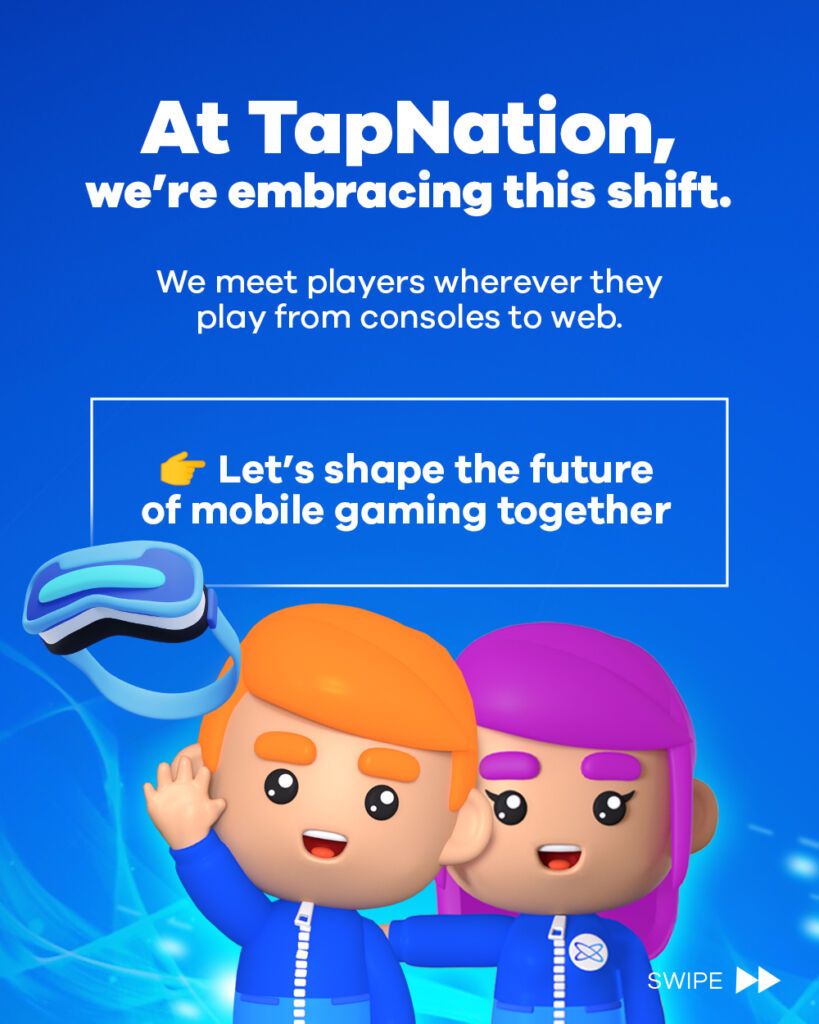
For developers and publishers willing to embrace this multi-platform reality, the opportunity is clear: greater reach, smarter user acquisition, and more sustainable growth.
At TapNation, we’re already building this future — adapting how we create, launch, and scale games to meet players wherever they choose to play.
References
[1] – https://www.tap-nation.io/blog/tapnation-september-newsletter-latest-news-insights-more/
[2] – https://business.mistplay.com/resources/alternative-app-stores-distribution-mobile-games
[3] – https://www.pocketgamer.biz/tiktok-launches-html5-games-with-voodoo-nitro-and-more/
[4] – https://www.crazygames.com/game/guess-their-answer
[5] –https://www.tap-nation.io/blog/tapnation-september-newsletter-latest-news-insights-more


